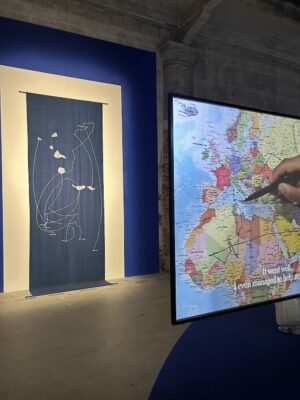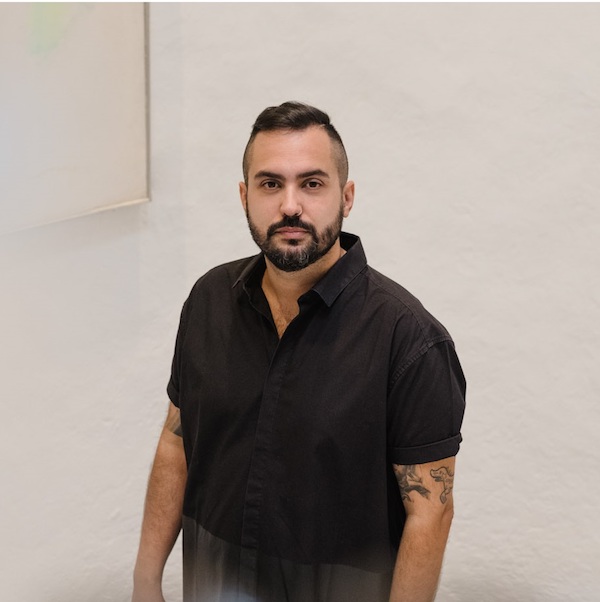Search
To search for an exact match, type the word or phrase you want in quotation marks.
A*DESK has been offering since 2002 contents about criticism and contemporary art. A*DESK has become consolidated thanks to all those who have believed in the project, all those who have followed us, debating, participating and collaborating. Many people have collaborated with A*DESK, and continue to do so. Their efforts, knowledge and belief in the project are what make it grow internationally. At A*DESK we have also generated work for over one hundred professionals in culture, from small collaborations with reviews and classes, to more prolonged and intense collaborations.
At A*DESK we believe in the need for free and universal access to culture and knowledge. We want to carry on being independent, remaining open to more ideas and opinions. If you believe in A*DESK, we need your backing to be able to continue. You can now participate in the project by supporting it. You can choose how much you want to contribute to the project.
You can decide how much you want to bring to the project.

Recently, within the collective exhibition Núcleo Contemporáneo (Contemporary Nucleus) curated by Adriano Pedrosa for the 60th edition of the Biennale di Venezia (2024), a large-scale embroidered tapestry made by Bouchra Khalili (Morocco, 1975) was on view. In Sea-Drifts (2024), the French-Moroccan artist undertakes a complex investigation into migratory routes, specifically those that link North and West Africa with the Canary Islands. Khalili uses the tapestry, dyed with natural indigo, as a strategy to document the trade routes of the 16th century. In the process, the artist subverts and redefines the traditional function and concept of the map and, in the process, the notions of territory and border.
Bouchra Khalili, in order to make visible the experiences of Africans who embark on one of the deadliest migration routes in the world, immerses the viewer within a diffuse, liquid border crisscrossed by a tangle of white lines that connect archipelago and continent. Despite the fact that the artist uses only this element, the force of this indigo blue represents both a slap and a seduction, causing the public to feel like a participant. The same shade of blue also floods a large canvas entitled Poema del Atlántico. La noche (Atlantic Poem: The Night, 1918-1919) by Néstor de la Torre (Canary Islands, Spain, 1887-1938), a key work and artist in the history of art from the Canary Islands. Poema del Atlántico. La noche was conceived as an exaltation of nature in which the mystery, violence and vastness of the ocean are explored under the light of the moon.
This composition reveals two disproportionately sharp-toothed moray eels, as if they were sea monsters, that are born in and are (con)founded with the sea. It is a sublime scene complemented by the figure of two children, one of whom, with a ghostly face, is about to be devoured and the other, whose face exudes fear and exhaustion, rides on the back of one of the moray eels in an attempt to save his life. Poem of the Atlantic: The Night might go unnoticed if it were not for the fact that the artist proposes the binomial death/Atlantic and because the figure fighting for his life has Afro features, the first known presence of a racialized character in a painting produced in the Canary Islands. This arrangement of elements is not a coincidence. After all, Néstor de la Torre lived for years in Paris and it would not be unreasonable to think that he came across a work completed exactly a century earlier and later acquired by the Louvre, that is, The Raft of the Medusa (1818-1819) by Théodore Géricault. Without forgetting that the Frenchman’s scene takes place on the coast of West Africa, very close to the Canary Islands, both paintings share the same rough sea, the bodies floating on the sea and a pyramidal composition containing racialized people.
The prominent inclusion of a black man (understood in both works to be African) constitutes an aesthetic and political gesture, embodying a powerful symbolic charge that transcends the limits of the historical narrative represented. This represents an act of disruption[1] Engler, M. y Engler, P.: Manual de desobediencia civil. Icaria Editorial. Barcelona, 2022, p 185., as described by Mark and Paul Engler, a key factor that engulfs an unavoidable public debate. It means making the invisible visible, disobeying the legitimate systems of representation and, in a certain way, blurring the material and immaterial borders that separate both continents. Including the effigy of an African in a European story (whether in the 19th century or today) quickly translates into an emblem of resistance and collective hope. The dynamic, vigorous postures of the characters in the two canvases, unlike the desolation that dominates the rest of the scenes, symbolize a potential for universal redemption and call for a necessary reflection on the universality of human suffering and the struggle for dignity, challenging the limits imposed by race and class.
In Europe, migrants and their descendants are constantly denied access to this common history. At the same time, they live with the national past as much as the native population, viewed as “the others”.[2]El-Tayeb, Fatima: Racismo y resistencia en la Europa daltónica. La Vorágine. Cantabria, 2021, pp 86-87.. As Afro-German researcher and activist Fatima El-Tayeb points out, the exclusion of African migrants in European historiography reflects a historical tension between hegemonic narratives and marginalized experiences. European historiography, traditionally focused on the contributions of figures and events from the continent, has reproduced a Eurocentric vision that dismisses the transcultural interactions and migratory dynamics that have shaped Europe for centuries. This silencing not only perpetuates an incomplete view of the past, but also imposes cultural and political hierarchies that affect African migrants in the present.
Thus, the Canary Islands, Europe’s southern border, responds to a model that is significant. The archipelago is politically European although geographically and historically it is African, as the origin of the Canary Island community is found in the Berber tribes of North Africa. However, the reality is different. The European and, therefore, Canary Islands historical construction has tended to relegate the African presence to the margins, labelling it as peripheral or anomalous, despite the mere 100 kilometers that separate the Canary Islands from Africa. We are no longer talking only about a physical border but also an emotional one, constructed through cultural and political discourses that reinforce the otherness of the migrant, turning them into an object of suspicion or rejection. Although contemporary artistic practices are increasingly concerned with addressing these silenced, annulled or underrepresented narratives, this has not always been the case. The scarce presence of African discourses in Canary Island artistic productions is truly embarrassing, a clear symptom of the education process. However, on the other hand, artists such as Teresa Correa (Canary Islands, Spain, 1961) have tried to integrate African voices and experiences into Canary Island history and, therefore, European history over the last 25 years. The artist has dedicated her work to build an inclusive historical narrative born from the community that does justice to the complexity of the past. Among her extensive production, we should mention Madre, as she calls Skull 1383 located within the collection of Canary Island aboriginal skulls at the Museo Canario. She found this skull by chance in 1998 and has been portraying it ever since. The skull, which corresponds to that of a woman of North African origin, has allowed her to delve into all the issues that Europe needs to (self)evaluate: marginal knowledge, memory, identity and, of course, borders.
[Featured Image: Bouchra Khalili, Sea-Drifts (2024), at the Venice Biennial, 2024]

Adonay Bermúdez. Independent curator born in Lanzarote. His curatorial practice responds to a current context of social fragmentation marked, among other aspects, by the unstoppable rise of neoliberalism. His practice focuses on dissident and confrontational processes that reveal the current oppressive system in which society is anchored, addressing issues such as migratory flows, the crisis of territory, historical revision, (post)colonialism, violence or the consequences of tourism. He grew up with the activism of César Manrique, which always leaves a mark.
"A desk is a dangerous place from which to watch the world" (John Le Carré)